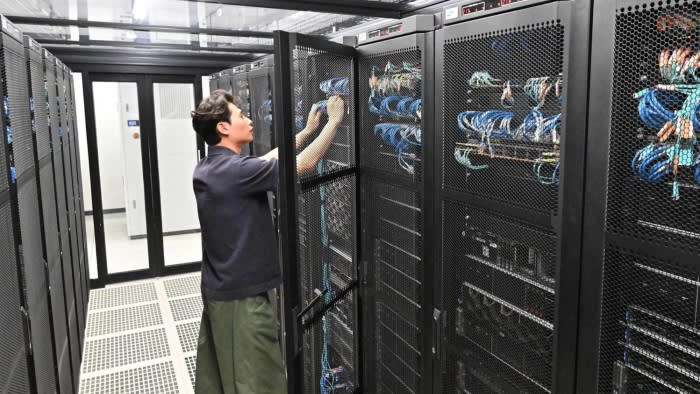Spending time in a warm, noisy building full of servers, routers and storage devices might not be everyone’s idea of a fun day out — let alone appear to be a glamorous investment opportunity.
But these unassuming physical assets, known as data centres, are the beating heart of the internet, cloud services and emerging technologies such as AI. As internet usage and AI uptake increase, so will the need for powerful data centres. In fact, ABI Research predicts the number of global public data centres will reach almost 5,700 by the end of the year and could top 8,400 by 2030.
This makes them an attractive physical asset for wealthy individuals and investors looking to capitalise on technological trends and enjoy high returns. However, investing comes with considerable risks, including their substantial environmental impact, red-tape delays and high building and operational costs.
Still, data centres offer huge market potential. According to research company Statista, the industry is projected to be worth $416bn this year and to reach $624bn by 2029.
Vicente Vento, founder and chief executive of investment management business Digital Transformation Capital Partners, spun out of Deutsche Telekom in 2015, says cloud service expansion, increased digitisation, data consumption trends and the AI boom are the main drivers of an industry which forms “the backbone of digital services”.
David Bloom, founder and chief executive of IT-focused investment company Goldacre, agrees that data centres could deliver “significant” returns for investors because of the “continued demand” for cloud services and the “increasing deployment” of large data centres globally.
According to analysts Canalys, global cloud computing spending topped $78.2bn in the second quarter of 2024 — a growth of 19 per cent on the previous year. This translates into a pressing need for a greater number of data centres; a report from real estate services company JLL found that data-centre capacity in core European markets will increase by 16 per cent this year.
Bloom says: “We have seen evidence of this through large funds, such as Blackstone, deploying significant funds in this space and Google’s commitment to spend $1bn [in the UK] to harness the full potential of the surging demand for AI.”
Thanks to consistent and steady growth, the data-centre industry can offer investors long-term and stable returns on their investments, says Rajesh Sennik, a partner at KPMG. Data centre investments typically provide yields of 5-12 per cent, he says, and choosing those in the right location is essential as they “require substantial and reliable power supply”.
He urges investors to consider regions offering access to renewable energy sources such as hydroelectric, wind and solar power to reduce both costs and environmental impact.
For many investors, Sennik says, hyperscale data centres — larger, scalable facilities that cater to enterprises and organisations with extensive IT needs — will be the best investment option due to the “high-visibility, long-term contracted revenue” they offer. “They also enable the deployment of large amounts of capital into a market with lasting growth,” he says. “Investors can target up to 20 per cent returns on potential investments with the right opportunity.”
Despite the potential for significant yields, investing in data centres can be risky, Vento warns. He says the complex nature of data centres, particularly around their design and components, means that investors should ideally have some prior industry knowledge or a good understanding of these assets before investing in them.
When net zero goals are rising to the top of the corporate agenda, investors should take into account the negative effect data centres have on the environment. Research by climate-data company Climatiq from 2022 found that the share of global CO₂ emissions generated by data centres (2.5 per cent) was more significant than aviation (2.4 per cent).
James Igoe, head of the Manchester office at investment management firm Redmayne Bentley, expects this energy consumption to increase over the next few years based on existing projections.
After balancing the yields and risks, investors keen to press ahead with data centre investments can take several avenues. According to Igoe, one is approaching private infrastructure funds with expertise in this area, such as Blackstone and KKR. The caveat is that these funds typically expect a minimum investment of £10mn per deal, he says.
Another option for non-institutional investors is investing in data centres through a real estate investment trust (Reit) such as Equinix, which recently posted a 7 per cent increase in revenue for the second quarter of 2024 compared with the same period last year. Igoe says: “Reits focused on data centres have performed favourably over the last five years given the demand in the sector and the promise for future growth potential.”
Investors who are deterred by the risks of data-centre investments but still looking to capitalise on their market potential could instead invest in companies that manufacture critical components for these assets, such as processors, servers and cooling systems, says Jonathan Frick, partner at management consultancy Bain & Company.
AI systems, for which data centres are essential, may also pay dividends to tech-savvy investors. “Beyond infrastructure, the application layer of AI is growing even faster, creating opportunities in AI-driven software and services, which may offer higher returns, but also come with greater technological risk,” says Frick.



